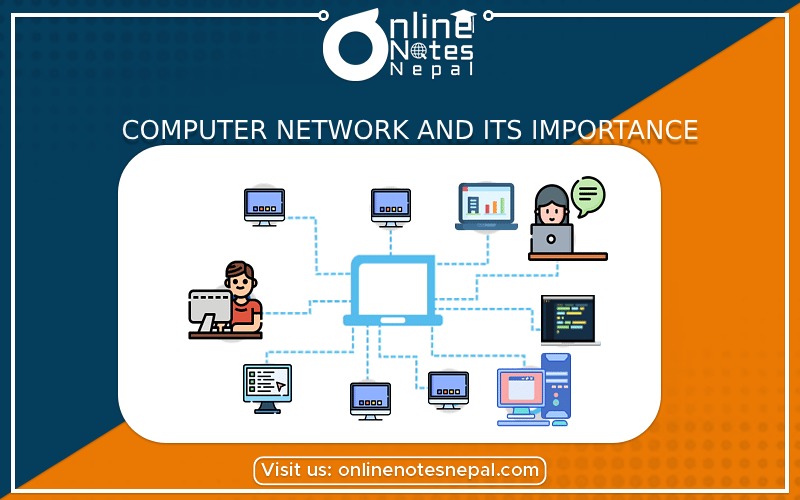Published by: Sujan
Published date: 18 Jun 2021

The communication process involves—sender of information, receiver of information, language used for communication, and the medium used to establish the communication.
The computer network is the interconnection of two or more than two computers that are able to share data and resources with each other.
Importance of Networking/Uses
Resource Sharing: In an organization, resources such as printers, fax machines, and scanners are generally not required by each person at all times
It results in the availability of the resource to different users regardless of the physical location of the resource or the user, enhances optimal use of the resource, leads to easy maintenance, and saves cost too.
Sharing of Information: Networking facilitates the sharing of information. Information stored on networked computers located at the same or different physical locations becomes accessible to the computers connected to the network.
As a Communication Medium: Networking helps in sending and receiving of electronic mail (email)messages from anywhere in the world. Data in the form of text, audio, video, and pictures can be sent via e-mail. He allows users to communicate online in a faster and cost-effective manner.
Video conferencing is another form of communication made possible via networking. People in distant locations can hold a meeting, and they can hear and see each other simultaneously.
For Back-up and Support: Networked computers can be used to take back-up of critical data. In situations where there is a requirement of an always-on computer, another computer on the network can take over in case of failure of one computer.
Some of the disadvantages of the computer network are:
The data is sent from one computer to another over a transmission medium. The transmission media can be grouped into:
Guided Media
In the guided media, the data signals are sent along a specific path, through a wire or a cable. Copper wire and optical fibers are the most commonly used guided media that transmits data as electric signals.
Copper wires offer low resistance to current signals, facilitating signals to travel longer distances.
Types of guided media:
Twisted Pair
A twisted pair cable consists of four pairs of copper wires coated with an insulating material like plastic or Teflon, twisted together.
Twisted pair is of two kinds:
{PHOTO}
Coaxial Cable
A coaxial cable has a single inner conductor that transmits electric signals; the outer conductor acts as a ground. The two conductors are separated by insulation.
The inner conductor, insulator, and the outer conductor are wrapped in a sheath of Teflon or PVC.
{PHOTO}
Optical Fiber
Optical fibers are being used for transmission of information over large distances more cost effective than the copper wire connection. Communication systems are now unthinkable without fiber optics. Optical fiber transmits data as light signals instead of electric signals.
An optical fiber cable consists of:
(1) Core–optical fiber conductor (glass) that transmits light.
(2) Cladding–an optical material that surrounds the core to prevent any light from escaping the core.
(3) Jacket—an outer covering made of plastic to protect the fiber from damage.
{PHOTO}
Unguided Media
In the unguided media, the data signals are not bounded by a fixed channel to follow. The data signals are transmitted by air.
Radio, microwave, and satellite transmissions fall into this category.